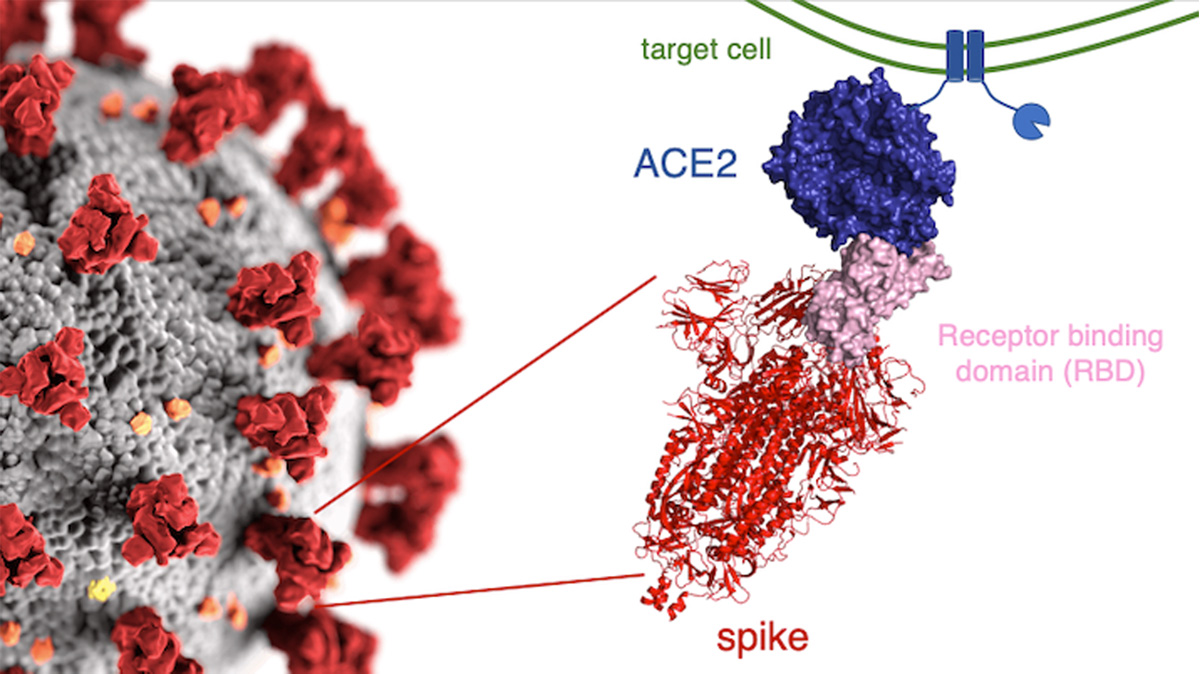
Map Catalogs Effects of Coronavirus Mutations
September 2, 2020| |
Scientists all over the world are working to fight the new coronavirus. Aside from vaccines and potential therapies, they are also developing diagnostic tests, understanding the virus's basic biology, and modeling the epidemiology. Howard Hughes Medical Institute (HHMI) Investigator Jesse Bloom and his colleagues have cataloged how nearly 4,000 different mutations alter SARS-CoV-2's ability to bind to human cells. Their data, publicly available online as an interactive map is a new resource for researchers developing antiviral drugs and vaccines to fight COVID-19.
The HHMI study focused on mutations to the spike protein, a key part of SARS-CoV-2. This protein binds to a protein on human cells called ACE2, a necessary step for infection. Mutations in the spike protein could change how well SARS-CoV-2 sticks to and infects human cells. Bloom's team bred yeast cells to display a fragment of the spike protein on their surface. This fragment, called the receptor binding domain, makes direct contact with ACE2. The researchers created thousands of versions of the fragment, each with different mutations. They then measured how well these mutated fragments stuck to ACE2. The data from the study show that many possible mutations could make the virus bind to human cells more strongly, but such mutations do not seem to be gaining a foothold in circulating versions of the virus.
The researchers found that other mutations made it harder for the spike protein to bind to cells or prevented the protein from properly folding into its final shape. Versions of the virus with these mutations might be less likely to gain a foothold because they cannot infect cells as effectively.
For more details about this study, read the HHMI Research News.
| |
You might also like:
- Scientists Discover Mutation Making SARS-CoV-2 Milder
- Researchers Discover Vulnerability in SARS-CoV-2
- Study Finds SARS-CoV-2 Has Six Strains
Biotech Updates is a weekly newsletter of ISAAA, a not-for-profit organization. It is distributed for free to over 22,000 subscribers worldwide to inform them about the key developments in biosciences, especially in biotechnology. Your support will help us in our mission to feed the world with knowledge. You can help by donating as little as $10.
-
See more articles:
-
News from Around the World
- Genomes of Three Most Troublesome Agricultural Weeds Published
- Scientists Discover First Known Gene to Impart Resistance to Speck Disease of Tomatoes
- UC Davis-Led Study Finds Missing Link in Evolutionary History of Rubisco
- Asia-Pacific Sets Responses and Recovery Plans on COVID-19 and Hunger
-
Research Highlights
- Plant Enzymes Found to Have a Vital Role in Flood-Resistance Adaptability
- Experts Review Potential of Plant-Based Edible Vaccines
-
Plant
- South Korea Promotes the First Genome-edited Food Crop
- South Korea's First Genome Edited Petunia Approved in the U.S.
- Animal Biotech Offers Potential in Addressing Food Insecurity
-
Health
- Map Catalogs Effects of Coronavirus Mutations
- Pregnant Women Face More Risks from COVID-19
- Washington University Saliva Test for COVID-19 Faster and Easier
-
Read the latest: - Biotech Updates (December 17, 2025)
- Gene Editing Supplement (December 17, 2025)
- Gene Drive Supplement (February 22, 2023)
-
Subscribe to BU: - Share
- Tweet

